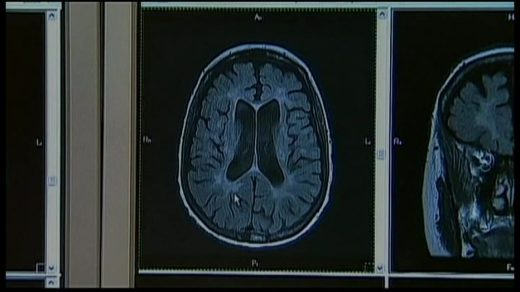
- More than 10 million people around the world have Parkinson’s disease.
- Many people with Parkinson’s may go undiagnosed due to a lack of symptoms or receive a misdiagnosis.
- Researchers from the University of Oxford have developed a new blood test to help detect Parkinson’s disease before main symptoms occur.
More than 10 million people globally have Parkinson’s disease — a neurological condition affecting a person’s movement and thinking skills.
Although there are some commonly known symptoms of the disease, sometimes signs take a long time to show or may be mistaken for other issues.
A poll of more than 2,000 people conducted in January 2020 by nonprofit organization Parkinson’s UK found that 26% of them reported being misdiagnosed with a different disease before receiving a Parkinson’s diagnosis.
While there is currently no cure for Parkinson’s disease, the earlier it is detected the more treatment and care a person can receive to help slow disease progression.
For this reason, scientists have been working on ways to test for Parkinson’s disease before symptoms even show.
One such team of researchers is from the University of Oxford, which recently published a study in the journal
According to Dr. George K. Tofaris, professor of neurology and translational neuroscience in the Nuffield Department of Clinical Neurosciences at the University of Oxford, and lead author of this study, the brain has a certain reserve of dopamine and ability to compensate.
This means that, by the time people with Parkinson’s disease present to the clinic with the familiar movement disorder, an estimated 60% or so of dopamine-producing nerve cells have already died and neurodegeneration is often widespread.
“At this stage, it is difficult to restore the neuronal networks,” Dr. Tofaris explained to Medical News Today. “On the other hand, if we could detect the pathology early before this critical threshold is reached, then we are more likely to be effective with disease-modifying therapies and the impact of any benefit is likely to be longer lasting even if ‘cure’ is not achieved.”
“We know from different studies that the pathology starts more than a decade before the clinical presentation,” he continued. “What we are lacking is a scalable biomarker to identify these changes, ideally a blood test. Therefore the need for such a test goes hand in hand with the urgent need for disease-modifying therapies.”
The blood test developed by Dr. Tofaris and his team is focused on detecting
“Alpha-synuclein is a sticky protein and in [the] blood is mostly — [approximately] 99% — derived from peripheral sources, especially red blood cells,” Dr. Tofaris explained.
“For this reason, so far, measurements of alpha-synuclein directly in blood have not been useful for biomarker development as most of the protein that floats in the blood is not relevant to the disease process. Because of the sticky nature of alpha-synuclein, it is also difficult to separate the disease-relevant fraction of this protein without contamination from the massive excess of peripherally derived alpha-synuclein,” he added.
To address this problem, this new blood test isolates
“Our assay utilizes antibodies against this neuronal marker that are hinged onto otherwise non-sticky magnetic beads,” Dr. Tofaris detailed. “Antibody-bead composites bind to neuronal extracellular vesicles in the serum and are then extracted with a magnet with minimal contamination from other blood proteins or free-floating alpha-synuclein.”
”The extracellular vesicles are washed and opened up with detergents so that the fraction of alpha-synuclein in them can be measured. We believe that this fraction reflects changes within nerve cells and therefore offers a more accurate snapshot of the disease process,” he continued.
Researchers then tested 365 people at risk for Parkinson’s disease with the new blood test, as well as 282 healthy controls, and 71 people with genetic or sporadic Parkinson’s disease.
Upon analysis, scientists found those with the highest risk of developing Parkinson’s disease — more than 80% probability — had a twofold increase in alpha-synuclein levels in neuronal extracellular vesicles.
They also found the test could accurately differentiate them from those with low-risk or healthy controls and could distinguish between a person with a high Parkinson’s disease risk from a healthy control with a 90% probability.
“My hope is that in the future, a blood test such as this one, possibly in combination with a questionnaire or a limited assessment, will be implemented for screening to identify Parkinson’s early for the instigation of a disease-modifying intervention as we currently do for certain cancers or screening programs for cardiovascular risk factors,” Dr. Tofaris said.
MNT also spoke with Dr. Daniel Truong, neurologist and medical director of the Truong Neuroscience Institute at MemorialCare Orange Coast Medical Center in Fountain Valley, CA, and editor-in-chief of the Journal of Clinical Parkinsonism and Related Disorders, about this study.
Dr. Truong commented that as a doctor, he believed these new findings are highly significant. He explained:
“They suggest that serum L1EV alpha-synuclein levels [blood levels of a form of alpha-synuclein] could potentially be used to identify individuals at high risk for developing Parkinson’s disease before the onset of classical motor symptoms. This early detection could be critical for timely intervention and possibly slowing the progression of the disease with emerging therapies. These findings significantly raised the aspect of [the] diagnostic of Parkinson’s disease. Another approach [that] has been recently introduced is
skin biopsy . This allowed [the] identification of alpha-synuclein in skin biopsy in patients with Parkinsonism.”
Dr. Truong said that identifying Parkinson’s disease before the main symptoms occur is crucial for several reasons, including early intervention and treatment, quality of life, a better understanding of disease progression, and potential benefit from disease-modifying therapies that might emerge in the future.
“Early-stage patients are valuable for clinical research, as they can help in understanding the initial stages of the disease,” he continued. “Early and accurate diagnosis can prevent misdiagnosis and inappropriate treatment, which can occur when Parkinson’s disease is confused with other conditions that cause similar symptoms. In these cases, the test could help to differentiate drug-induced Parkinsonism, normal pressure hydrocephalus, [and] vascular Parkinsonism from Parkinsonism.”
“Early diagnosis removes uncertainty for patients experiencing symptoms without an identified cause,” Dr. Truong added. “This can lead to better psychological outcomes as patients and their families can focus on managing the disease rather than worrying about an unknown condition. Overall, early identification of Parkinson’s disease is a key aspect of improving patient outcomes, advancing research, and developing more effective treatments.”



